When you’re facing unprecedented situations like the current COVID-19 pandemic, it can be hard to know the best thing to say to your customers.
It goes without saying that retailers will be faced with different communication challenges at this time – and in the short-term, nobody can claim to have sure-fire solutions to them all.
The good news is that we’re all in this together, and the retail community has already been using both creativity and common sense to step up to the challenge.
This blog post will discuss some of the immediate considerations that retail marketers might want to think about in the short term, and offer some real-life examples.
For many retail businesses, there will be necessary information that you need to get in front of customers, such as:
In such cases, email and other digital channels are the best way of getting your key messages in front of shoppers.
These messages should:
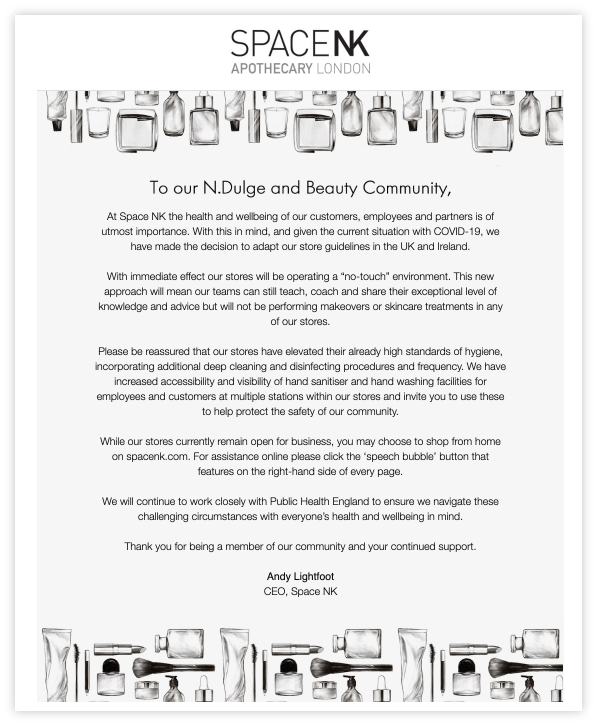
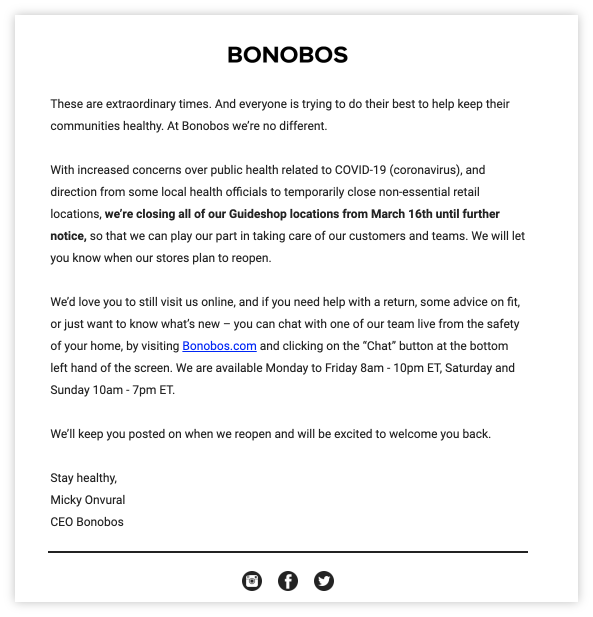
Should you reach out to your customers with a dedicated message if you’re online-only or not impacted by any of the above? Again, this is very much a brand-led decision, but proceed with caution.
Acknowledging the situation and offering your customers a gentle reminder that you’re open and operating as usual may be tempting. But it’s important not to appear insensitive or like you’re trying to capitalise on the situation or, at the other end of the spectrum, like you’re virtue signalling. Likewise, it’s worth considering your customers are likely receiving a bunch of these messages, and their patience may be wearing thin (hello, unsubscribes).
That said, some brands are using these emails as an opportunity to provide more value to customers.
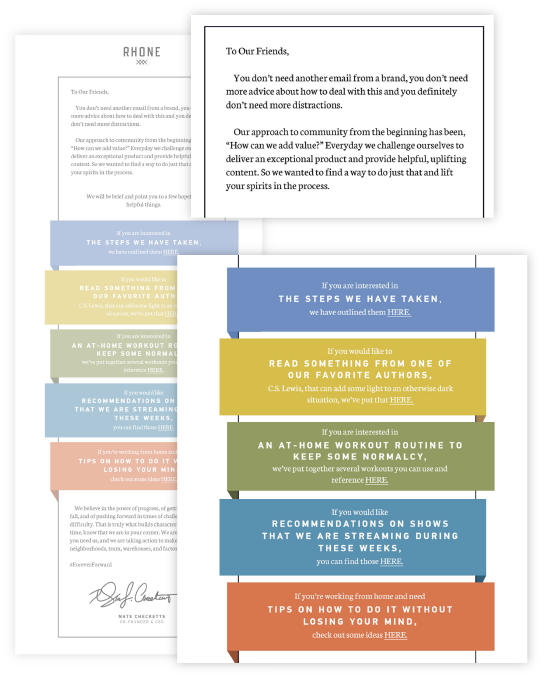
And it’s not just email that brands are using to get key messages across – we’ve seen many retailers galvanise their social accounts to answer customers questions and create a sense of community.
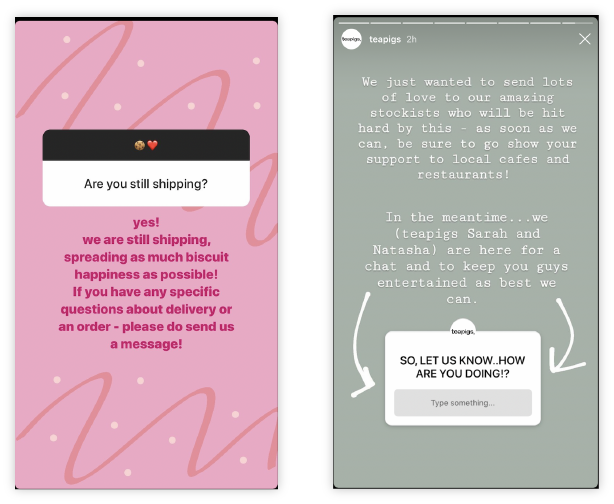
In stressful times, it might feel insensitive to carry on sending communications as if there isn’t, well, a worldwide pandemic going down.
But on the same note, with the workforce shifting to working from home, and with restrictions on socialising predicted to last weeks (if not months), there’s an argument that consumers will have more time on their hands to shop online.
It’s a tough line to tread, and there’s likely to be ongoing debate about how brands should respond.
How do we feel about this ad?
Smart and timely?
Unsavory and insensitive?
Or….? pic.twitter.com/QvZ8hlMGjb— Michael J. Miraflor (@michaelmiraflor) March 13, 2020
Given the uncharted territory, many brands are choosing to go out to their customers to get a feel for what they should do and how they should communicate.
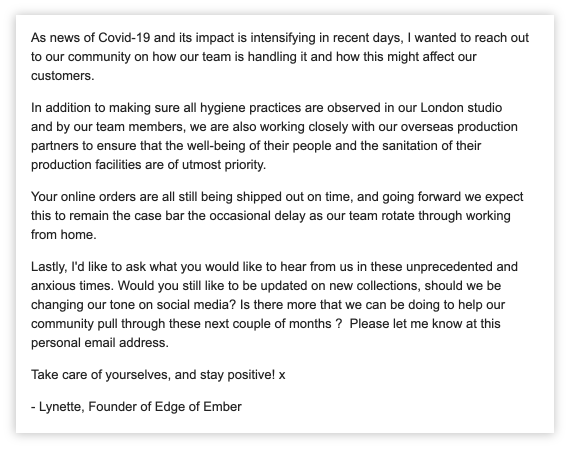

Others are taking a more editorial approach, using their social communities to share content and create a sense of solidarity – whether that’s asking people to share their WFH setups or offering (non-sales based) advice on how to survive quarantine.


Whether you choose to address the current situation head on in your emails and other channels, or continue business as usual (or indeed somewhere in between, like the example from Papier below) is ultimately a brand decision – and the retail vertical you operate within, your brand image and outside merchandising factors should play into your communication strategy.
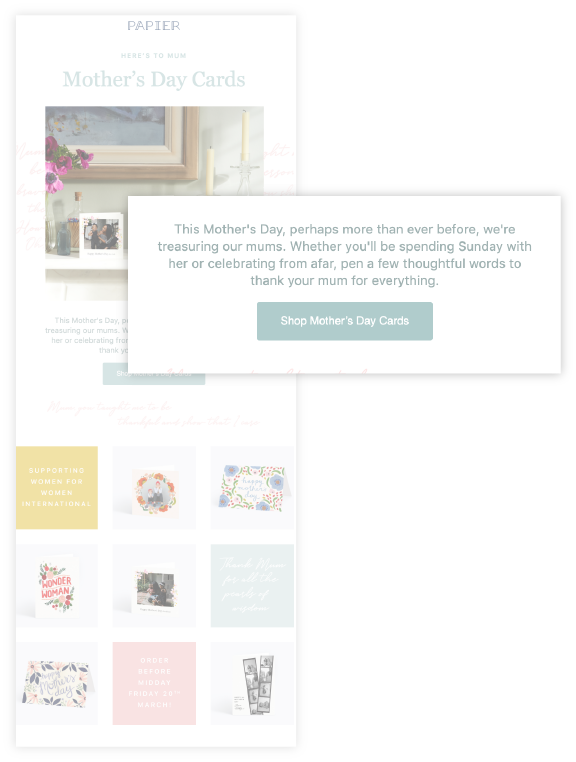
Quick tip – dealing with stock uncertainties
Providing great customer experience in a time of crisis is a sure-fire way of ensuring shoppers stick with you in the long-term. While many retailers may be facing uncertainties around supply chain, a key way of ensuring this does not impact the ongoing customer experience is to adapt the product recommendations you serve up. This may be by:
- Ensuring that out of stock items are suppressed from product recs
- Ensuring that specific categories that you know will not be relevant to customers right now (e.g. holiday or travel items / outdoor recreation) are excluded
- Ensuring that specific products or categories that you anticipate you might experience stock difficulty with are also excluded
Now more than ever, automation will be a crucial stream of revenue from existing shoppers, supplementing broadcast and other digital channels. On top of adapting your planned broadcast activity, it’s also worth taking stock of messages that may already be going out via automation to ensure they provide the best customer experience.
Things to consider:
We hope this post has provided some practical advice in the short-term when it comes to addressing the challenges that the current COVID-19 situation is posing; and we hope to update this as time goes on.Any questions we didn’t answer for you? We want to do our best to support you, our community – drop me a line on [email protected] and we’ll do our best to answer them.
Ometria is committed to protecting and respecting your privacy, and we’ll only use your personal information to administer your account and to provide the products and services you requested from us. You may unsubscribe from these communications at any time. For information on how to unsubscribe, as well as our privacy practices and commitment to protecting your privacy, please review our Privacy Policy.
Take the first step toward smarter customer marketing